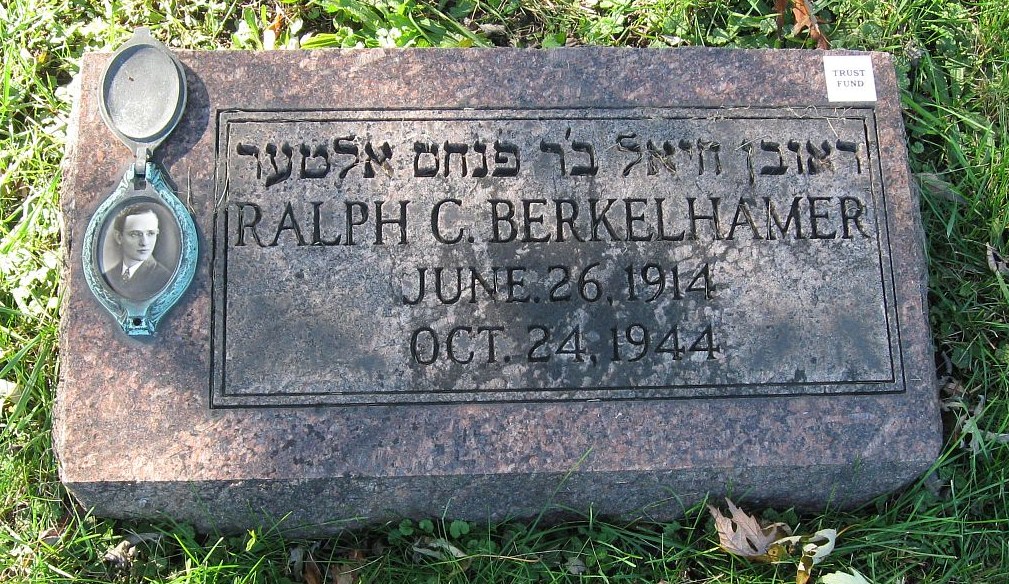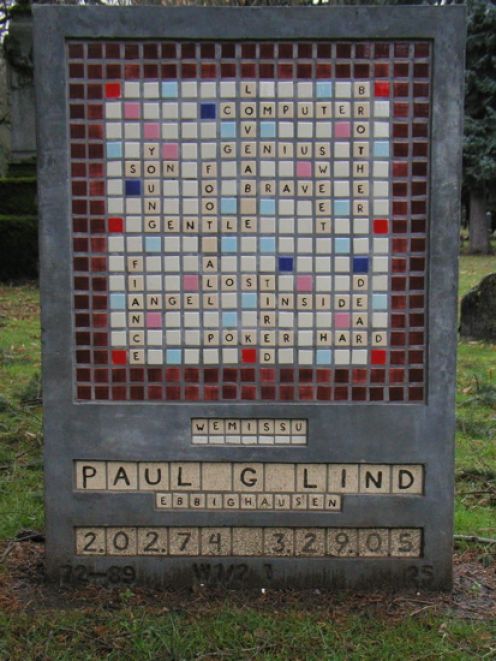Laura Arnold Leibman
This past May when I checked in for my flight home from a research trip in Bridgetown, I was caught off guard by a Barbadian crew member's eagerness for my hometown. "Portland? Portland, Oregon?? I LOVE
Grimm." Yet long before the Pacific Northwest was the official haunt of Grimms,
Wesen, eternally youthful vampires, and their
business-world BDSM equivalents, it was the birthplace of new religious movements and religious innovation. While certainly endless rain and overcast days have a magical appeal for those who tend to sparkle like diamonds in the unwelcome sunshine, the Gothic weather patterns of the Pacific Northwest also seem to induce a certain spiritual ecstasy for what might lie beyond the mists of the visible world. This makes it a fantastic place to study the local inhabitants' visions of death and the great beyond. In this post I consider Pacific Northwest innovations in Russian Burial traditions and the impact of the Russians on Portland funerary art.
 |
Grimm Gravestone. Waverly Memorial
Cemetery, Albany
Cemetery.
Photo by Author
|
 |
Woodman of the World Motif
Riverside Cemetery, Albany OR
photo by Johan Mathiesen |
This summer I have been lurking once again in local cemeteries, thinking about how the landscape and culture of the Pacific Northwest influences the culture of the dead. While Oregon cemeteries certainly suffer from an overabundance of log and tree themed monuments (
right), what has been interesting me lately have been the gravestone traditions of the local Russian religious communities and the ways that those traditions have both been transformed and co-opted by regional culture.
There are a large number of Russian-speaking immigrants and their descendants in the Pacific Northwest, and the Russian religious communities are extremely diverse. In addition to
Russian Jews who came to the Pacific Northwest in droves during the Great Migration (1880s-1920s), the Pacific Northwest has been the new homeland of a wide range of Russian Christian groups. Perhaps the most famous of these are the Old Believers of the Willamette Valley of Oregon, who "are descendants of
medieval Russians who refused to adopt the mid-17th century church
reforms as promoted by Tsar Alexei Mikhailovich Romanov and implemented
by Patriarch Nikon of Moscow" (
Morris, Morris, and Osipovich). Old Believers tend to be recognizable around Portland because of their distinctive dress, most particularly the
shashmura, the married women's cap and cover (
Morris, Morris, and Osipovich). In addition to the Old Believers there is a thriving community of
Russian Orthodox and various
Evangelical sects including Pentecostals, Saturday Sabbath-keepers, Molokhani (milk-drinkers), Jehovah's Witnesses, and Baptists (
Foat). Although not usually as strict in their dress code as the Old Believers, many of these evangelical groups will also wear "village" dress including a head scarf.
One characteristic feature of Russian gravestone art,
both in Russia (below) and in Russian ethnic communities in the United
States (further below), is the use of photographs. Although Old Believers and
Russian Orthodox tend to favor their distinctive crosses (right), among evangelical Russians and Russian Jews, this
photographic tradition often transcends religious denominations and
taboos.
As Joachim Jacobs notes about the Jewish cemetery in St. Petersburg, "almost all the gravestones feature photographs of the dead. This completely normal practice in the non-Jewish cemeteries of St. Petersburg is in direct violation of the [Jewish]
halacha [against graven images] and it is very rare to see it on such a large scale in a Jewish cemetery of this period" (Jacobs 153). Yet I know in my own family, my Reform-minded Russian relatives continued this tradition of photographs on gravestones after leaving Odessa and moving to Chicago. In fact the Russian-Jewish photographic tradition was so popular among immigrants of that generation that some of my non-Russian relatives also seem to have co-opted this tradition, even when they were more religious than my Russian kin (See
Ralph Berkelhamer photo below). In Portland, examples of the Jewish-Russian photographic tradition can even be found in
Kesser Israel's [Jewish] Orthodox cemetery, though apparently according to local Jewish historian
Sura Rubenstein, their use sparked some controversy.
 |
Gravestone Using Photo Under Metal Cover
Waldheim Jewish Cemetery, Chicago
Photo by Jim Craig, FindaGrave |
Perhaps the most glorious use of the Russian photographic tradition in the Pacific Northwest, however, is employed by the local Russian Christian community, as exemplified by the stones in the
Lone Fir Pioneer Cemetery in SE Portland. Although one of the
oldest cemeteries in Portland, the grounds continue to inter new members. Whereas older Russian cemeteries tended to use an enameled photograph (St. Petersburg) or a photo under a metal cover (
Waldheim Jewish Cemetery, Chicago; right), the Russian graves in Lone Fir favor a new technique of creating a replica of the photo laser-etched onto a glossy black stone. This laser photo technique is popular in other
Russian Christian Cemeteries, though the black stone isn't always as ubiquitous as it is in Portland. While Russian Jews in Portland favored the older enameled style photos, the laser stones are well suited to the deluge of rain Portlanders expect each year.
 |
Russian Couple. Lone Fir Cemetery. Portland, OR.
Photo by Author. |
Also intriguingly is the location of the stones in Lone Fir. Although most of the Russian stones tend to be towards the Eastern Gate, the stones are mixed in with the rest of the residents of the cemetery rather than being religiously segregated. According to my colleague Michael Foat, there is no consecrated Russian Orthodox cemetery in the area, other than the
churchyard at the exquisite
Church of the New Martyrs and Confessors in Mulino (left). Consequently the Russian Orthodox are buried in various cemeteries, and a
priest would consecrate the individual's burial spot. Given the lack at Lone Fir of the crosses usually associated with Russian Orthodoxy and Old Believers, the Russian burials at Lone Fir are most likely from other Slavic Evangelical sects that are seeking to maintain a sense of connection with Russianness in the afterlife.
 |
Russian Gravestone with Lasered Photo
and Religious Symbolism.
Lone Fir Cemetery. Portland, Oregon
Photo by Author |
 |
Russian Woman with "Village" Dress Head Scarf (Platok)
Lone Fir Cemetery. Portland, Oregon
Photo by Author |
 |
Detail of Russian Woman with Head Scarf (Platok)
Lone Fir Cemetery. Portland, Oregon
Photo by Author |
 |
Russian Stone Combining Religious and Stock Nature Images
of Willow Trees at Lone Fir Cemetery. Portland, Oregon.
Photo by Author |
 |
Willow Tree Detail
Lone Fir Cemetery
Photo by author |
Some Russian stones combine the photographs with lasered nature images that invoke standard religious messages regarding a peaceful afterlife, such as willow trees (above and left). One of the more interesting innovations, however, among Russians at Lone Fir is the inclusion not only of photos of individuals, but
individuals in iconic Pacific Northwest nature scenes, or just the
scenes without a person. Such scenes re-envision the dead as both eternally Russian and an ideal peaceful landscape that is local.
 |
| Russian Stone with Mt. Hood. Lone Fir Cemetery. Photo by Author |
 |
| Russian Stone with Image of Columbia Gorge Historic Highway. Lone Fir Cemetery. Photo by Author |
 |
| Russian Stone with Nature Scene with local Flora and Fauna. Lone Fir Cemetery. Photo by Author |
A seemingly unintentional consequence of the localizing of Russian identity is that the stone style has begun to appeal to local residents who aren't obviously Russian. Although historically "individualistic stones" in the cemetery tended to use more standard U.S. stone styles and techniques, the glossy black stones with detailed etching have recently begun to be co-opted for the individualistic strain of Portland gravestones who want to "
keep Portland weird" even after death. That is, even as the Russian stones appear to be melding Russian and local identities, so too local individuals seem to be using the iconographic system of a particular ethnic community for their own uses. An early example of the appropriation of both the Russian style
and the religious message is the stone of Shawn Lee Miller Welsh stone in which the Russian style and scenes of eternal rest have been co-opted to depict "Horse Power Heaven."
 |
"Gone Home to Horse Power Heaven."
Lone Fir Cemetery. Portland, OR.
Photo by Author. |
A second example of the reinvention of the Russian style is a stone belonging to publisher
Joel Weinstein,
who died in Puerto Rico of Lung Cancer and whose stone uses both Latino
and Russian styles along with Portland motifs like bike riding to
create an individualistic monument that as one person put it is "
as unique as he was." Weinstein's stone was apparently inspired both by the Russian stones and Welsh's stone, which a
friend of Weinstein suggested was
Weinstein's favorite stone in the cemetery.
On some level, both Weinstein and Miller's tombs seem to have taken the "regionalizing" of Russian identity seriously and reworked it further to fit with the cult of personality prevalent in Portland. The nondenominational Lone Fir cemetery is an intriguing example both of religious ethnic communities adapting ethnic tradition to meet emergent identities and of other area residents co-opting what was once a sign of both ethnicity and religious belief for individual expression.
Works Cited and Resources
Colfer, A. Michael. Morality, Kindred and Ethnic Boundary: A Study of the Oregon Old Believers. New York, N.Y., 1985.
Foat, Michael. 2015. E-mail.
Jacobs, Joachim.
House of Life: Jewish Cemeteries of Europe. London: Frances Lincoln Ltd, 2008.
Morris, Richard Tamara Morris, Tatiana Osipovich. "OLD BELIEVERS."
Russian Speaking Communities in Oregon. Accessed 2015.
Notes
* In the 1990s,
Marion Goldman proposed a book on the topic of "Religion in the Rain," though sadly it was never published. My title is an homage to her work.

























Comments